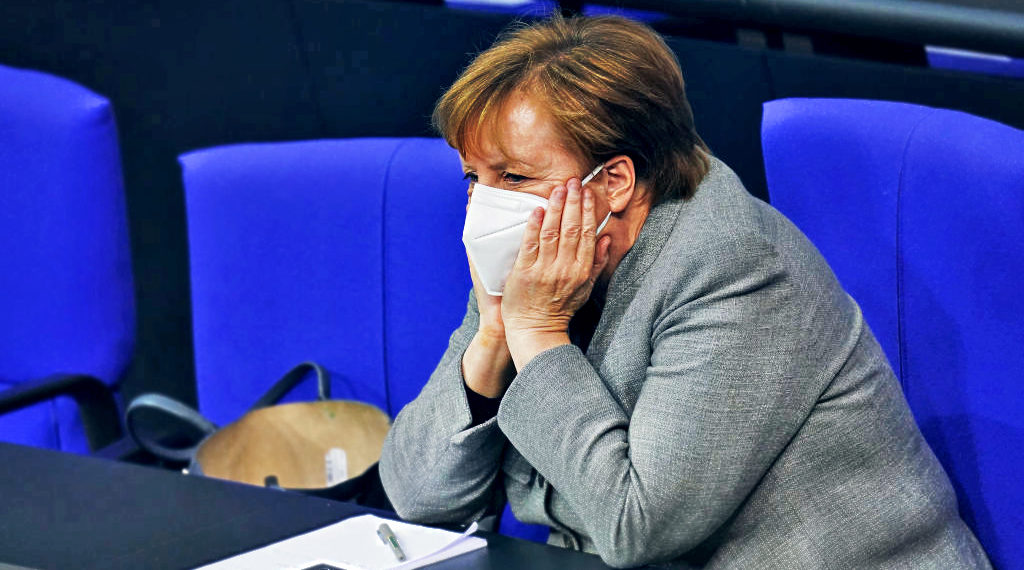Election nights are always long. In Germany, where voters went to the polls yesterday, it is unlikely that we will know who Angela Merkel’s successor will be anytime soon. After sixteen years in office, it seems, the 67-year-old won’t be retiring just yet.
Angela Merkel’s CDU/CSU and the Social Democrats (SPD) came in nearly neck and neck, but the SPD has edged ahead and has secured a narrow victory. This puts the smaller parties of the Greens (15%) and the Free Liberals (11%) in the position of kingmakers while the political fringes of Die Linke on the Left (5%) and the Alternative für Deutschland on the Right (10%) appear to be set for the opposition benches.
An array of coalitions is therefore possible to provide a governing majority to lead Germany into a new post-Merkel age. The constitution does not even prescribe that the largest party has to provide the chancellor. Helmut Schmidt, for example, West Germany’s chancellor from 1974 to 1982 retained his office after the elections of 1976 and 1980 even though his SPD came second in both elections. The Free Liberals acted as kingmakers on both occasions and denied the winning CDU/CSU a governing majority by working with their rivals. Now, both the Christian Democrat Armin Laschet and his Social Democrat rival, Olaf Scholz, could claim the right to be Germany’s next chancellor.
While this current result is unusually close, German elections rarely ever deliver clear results. The country’s complicated post-war election system is a hybrid of FPTP and proportional representation in which voters elect a local MP directly as well as opting for a political party. Directly elected MPs enter the Bundestag automatically and each party gets to fill up any remaining seats from its set list until it reaches the percentage of the party vote.
The proportional representation element is still strong, however, and usually means that coalition governments have to be formed. Only once in its post-war history has (West) Germany seen a party win an election outright. That was in 1957, when Konrad Adenauer, West Germany’s first chancellor, was riding high on a wave of economic post-war recovery.
Once the results of the ballot are confirmed, the parties enter coalition negotiations, for which there is no timeline. For that reason, the existing government will have to stay as caretakers until the next executive is formed. However, the new Bundestag composition will have to convene within 30 days of the vote, which means a lame-duck chancellor and cabinet preside over a freshly elected parliament — an odd situation in which no significant decisions are usually made.
Coalition talks will eventually result in a formal treaty between the parties involved where they state the common aims of the government they will form and any obligations that the parties have agreed to — this is almost akin to writing a new manifesto and can take months.
Indeed, when Angela Merkel received the second-worst result for her party at the last election in 2017 meant that the coalition talks were the longest in German history. They dragged on until February and could only be resolved thanks to a strong intervention from the German President Frank-Walter Steinmeier, a figure that is meant to be neutral and stand above party politics.
Angela Merkel has worked politics since the fall of the Berlin Wall in 1989 and dedicated her life to what she sees as her public duty. Now her time in office looks set to stretch further. But if she makes it through to Christmas, she will officially be the longest-serving Chancellor in post-war German history — another record that it might be foolish to bet against her achieving.











Join the discussion
Join like minded readers that support our journalism by becoming a paid subscriber
To join the discussion in the comments, become a paid subscriber.
Join like minded readers that support our journalism, read unlimited articles and enjoy other subscriber-only benefits.
Subscribe